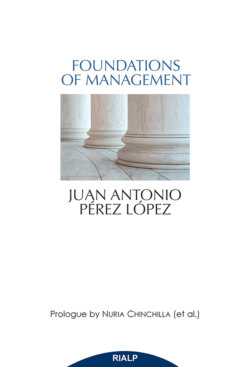Читать книгу Foundations of management - Juan Antonio Pérez López - Страница 10
На сайте Литреса книга снята с продажи.
Theories or models for explaining organizations
ОглавлениеEven a superficial analysis of the processes of purpose definition, communication and motivation shows that, besides the difficulties that each raises in its own right, all are also substantially complicated by their mutual interdependence. Thus, it is apparent that:
a) The quality of the definition of purpose will affect the extent to which the needs of the organization’s members can be satisfied. On the other hand, however, the satisfaction of needs is a driving force in motivating individuals to cooperate with the organization.
b) The definition of purpose determines the actions that must be coordinated, which means that any refinement or development of the purpose implies a development of the communication process.
c) The performance of specific tasks required of members will, in turn, affect their motivation to cooperate.
Given all these complications, it is not surprising that simplified models or images of reality have been devised in order to improve our understanding. These models have become the rationale for different theories that have been formulated about human organizations.
Leaving aside the secondary differences which do not affect the primary concepts we are dealing with, there are only three major groups of theories or models—three paradigms—to explain the behavior of organizations. These are:
- Mechanical models (the organization as a technical system)
- Organic models (the organization as an organism)
- Anthropological models (the organization as an institution)
A human organization is an anthropological reality: that is, a group of people who have come together to do something jointly. However, it is sometimes useful to represent this
reality through a simplified image—to reduce it to a model that leaves out some of its aspects--in order to analyze others in greater detail (the process is like the one we use when we analyze a map instead of studying a piece of land on site).
This reduced representation must be treated with great care, with full awareness of that which has not been included in it and of the difficulties that may arise interpreting, in reality, what has been found through analysis of the model.
For example, a machine is controlled by certain processes, and there are also control processes in an organization. However, the meaning of control in each case is very different, and we would learn little about control in human organizations if we only studied control processes in machines.
We will discuss later the dangers of using mechanical or organic models to represent organizations. First, however, it would be useful to take a closer look at the organizational “image” that each of these models or conceptions proposes, and how well each represents the processes of purpose definition, communication and motivation.
